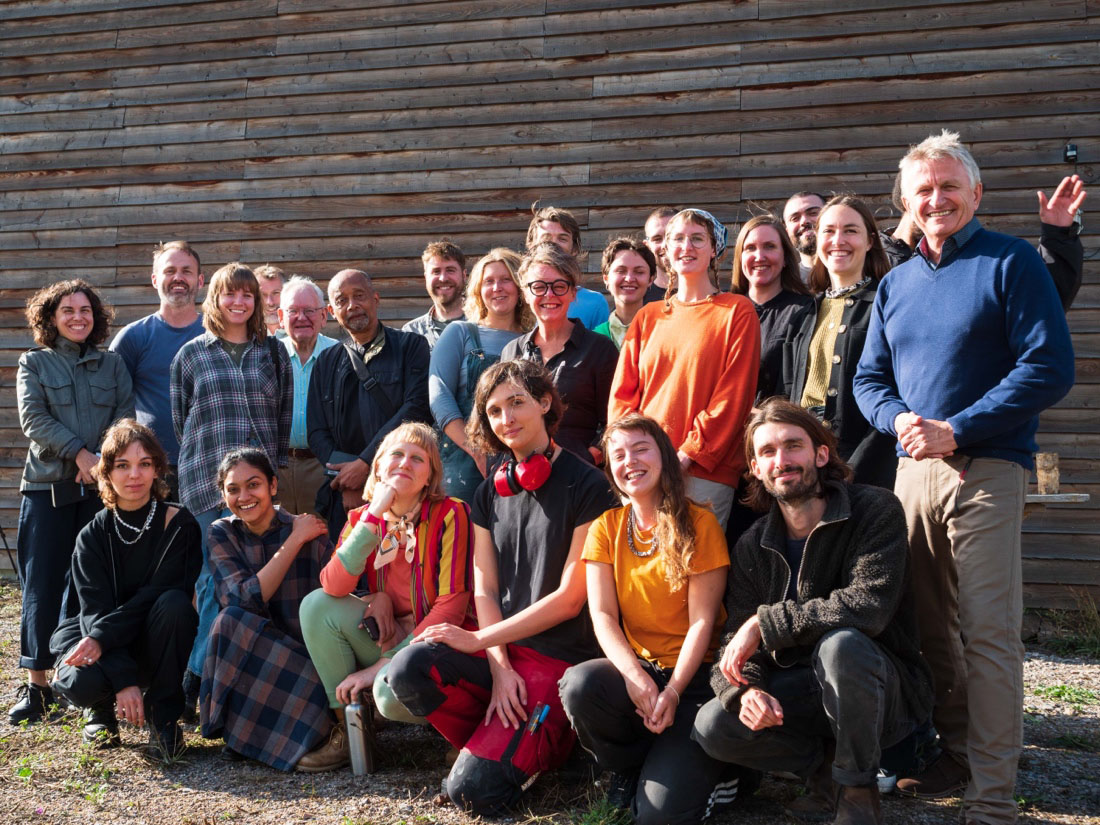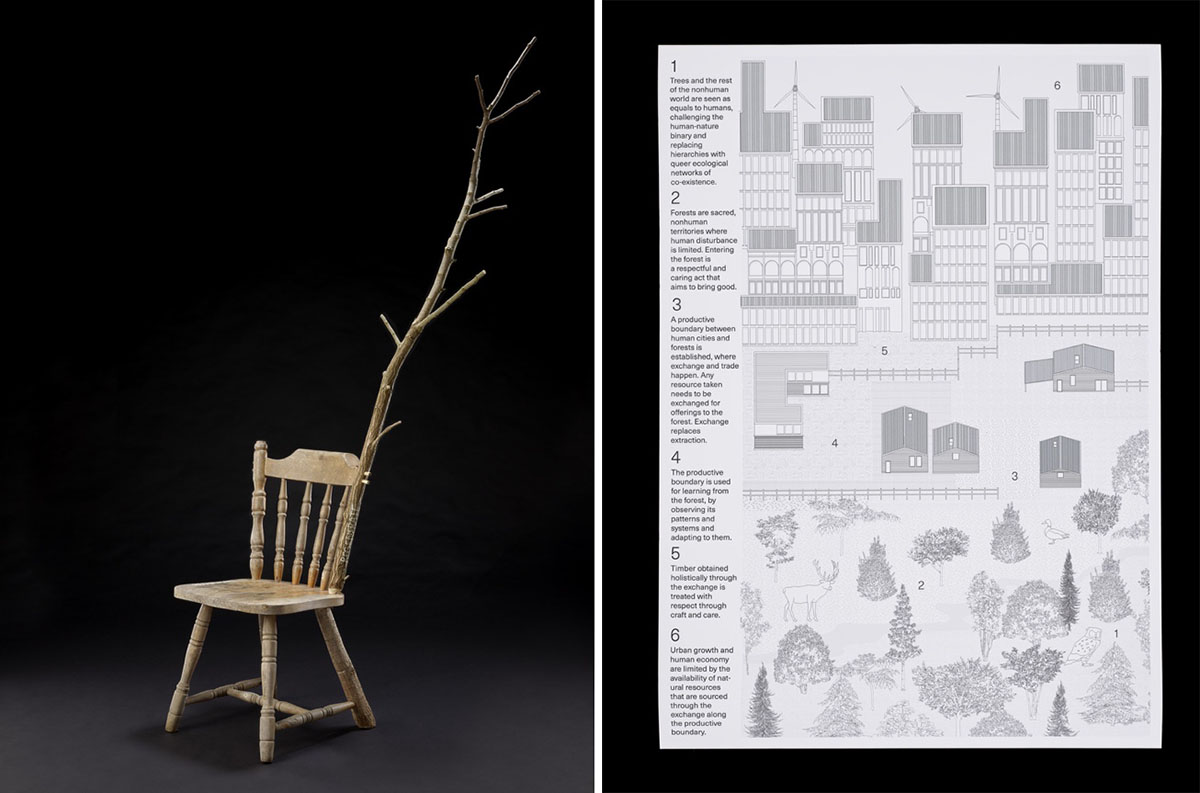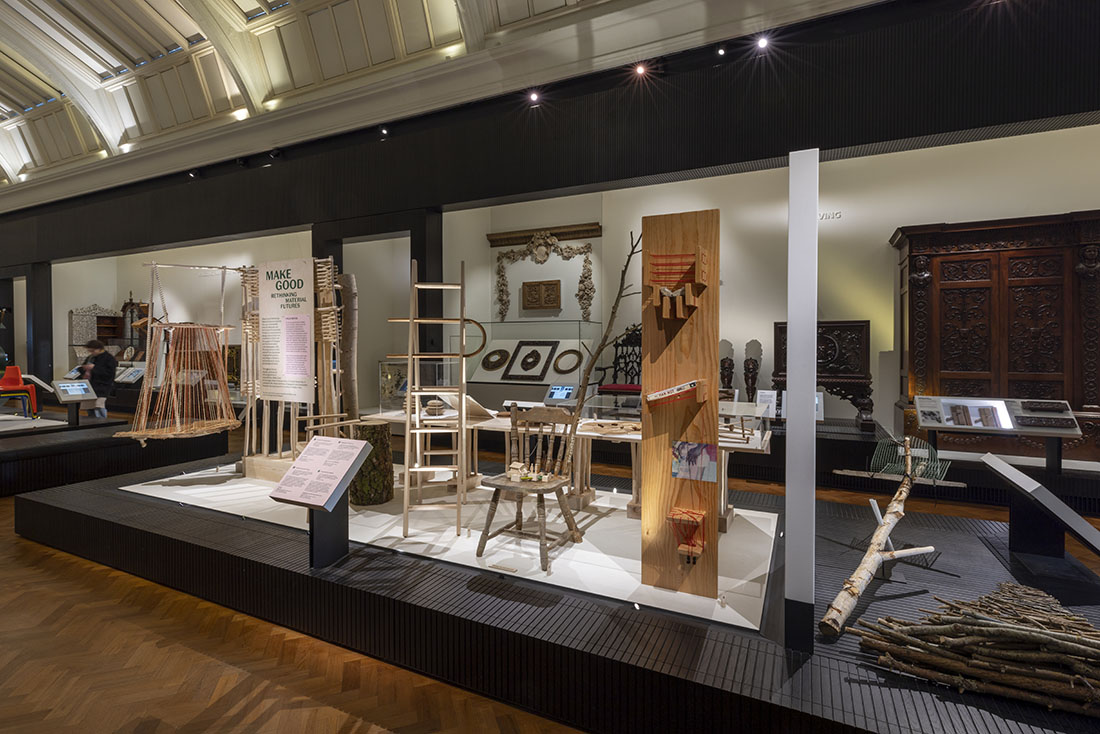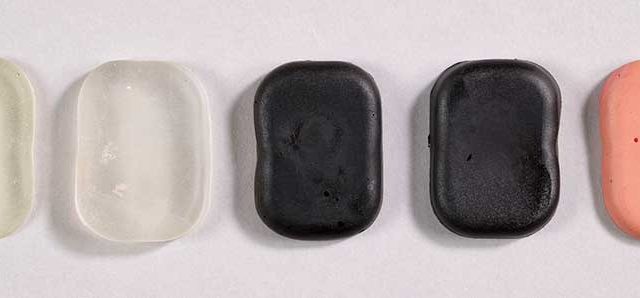
For its second iteration of Make Good: Rethinking Material Futures, the V&A collaborated with environmental charity Sylva Foundation in Oxfordshire to create the Field Notes summer school, a project inviting 12 practitioners within art, design and architecture to explore questions about under-used home-grown timber, and looking at issues of land use and ownership; management of forests; and questions of access and inclusion.
There were two stages to the summer school: a week of online talks, seminars and mentoring sessions in August, and a week in person at Sylva Foundation’s Wood School in September.

This post details the resources we shared with the practitioners ahead of the first week. Complemented by a programme of talks by curators, makers, conservators, foresters and arborists, they helped us to delve into some of the questions we wanted to raise over the week. They were used as a springboard for conversations nurtured by the participants’ own thoughts and experiences, and marked the start of an ongoing discussion throughout the whole Summer School.
WATCH
№ 2.6.3.51: Cambio video (2020). Formafantasma
This film by the design duo Formafantasma forms part of an investigation into the governance of the timber industry. Initially commissioned by the Serpentine Galleries in 2020, the research project was also discussed during the first Make Good symposium. The piece prompted the group to explore the tension that exists between human and forests, both in terms of impact and dependence.
Our Time on Earth: Stories of Change exhibition film (2022). Joycelyn Longdon. The Art Issue and The Barbican Centre
This short video by Joycelin Longdon, PhD student in Cambridge and founder of Climate in Colour, addresses the climate conversation’s lack of accessibility and intersectionality, and the importance of giving space to marginalised communities within her research. Unfortunately not available online, we are nevertheless grateful to have been granted access to this video as it enabled discussions about the importance of inclusivity when it comes to (re)imagining shared sustainable futures.
READ
S. Cox, Native Regenerative brochure (2021). Self-published
This leaflet was produced by designer Sebastian Cox alongside the Native Regenerative furniture collection presented at Cavendish 14 during London Design Festival 2021. Cox’s piece draws attention to the interdependency of large herbivores and vegetation in creating a balanced biodiversity. In this time of climate emergency, the designer argues for a move toward regenerative endeavours, rather than solely sustainable practices.
G. Hemery, ‘Of the Earth’ in The New Sylva: A discourse of forest & orchard trees for the twenty-first century, pp. 19-43 (2014). Bloomsbury
The New Sylva takes inspiration from John Evelyn’s 1664 book Sylva, the first study of British trees, and the world’s first forestry book, and brings its discourse into the 21st century. Reading the chapter titled ‘Of the Earth’ offered an interesting introduction to tree ecosystems and raised important questions about the stewardship, care and management of forests.
J. Longdon, What Makes a Forest? pamphlet (2014). Grizedale Forest and Signal Film and Media
In this highly moving, intimate and poetic piece, Joycelyn Longdon likens the experience of immigrants to the status of non-native species in forests and tackles questions linked to feelings of belonging, culture and access to nature, especially for people of colour. The text was written to feature on Nature is Ours: Forest of Cultures, an online art site platforming non-western voices inspired by Grizedale Forest in response to the lack of representation of people of colour in the UK’s green spaces and climate justice concerns.
A.L. Tsing ‘Arts of Noticing’ in The Mushroom at the End of the World: On the Possibility of Life in Capitalist Ruins, pp. 17–25 (2021). Princeton University Press.
Arts of Noticing observes that capitalism and the notion of progress turned humans and other beings into resources, and landscapes into sites of ‘promise and ruin’. The author proposes to reconsider our landscape as patchy sites subject to multiple temporalities where shifting assemblages, or multi-species communities, can enable a collaborative survival.

We are also grateful for the participants who contributed their own references and resources:
T. Morton Subscendence, e-flux (85) (2017)
T. Morton, ‘Guest Column: Queer Ecology’, PMLA, 125(2), pp. 273–282
A. Scott, Timber Wars podcast (2020 – 2021). Oregon Public Podcasting

Now the work of the 12 practitioners taking part in the summer school is on display in the V&A’s Susan R Weber Furniture Gallery and each and every project forms part of a collection of Field Notes probing further questions and inviting more conversations about the opportunities and challenges of making locally.
The participants are: Georgina Bowman, Beatrix Bray, Rachel Cox, Krupa C. Desai, George Fereday, Hannah-Lily Lanyon, Nia Manoylo, Phoebe Oldfield, Henrique J. Paris, Matthew Rosier, Alisa Ruzavina and Adam Stanford.


